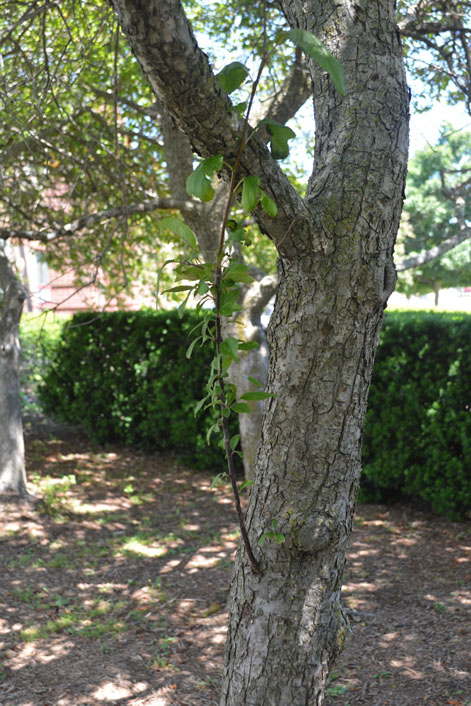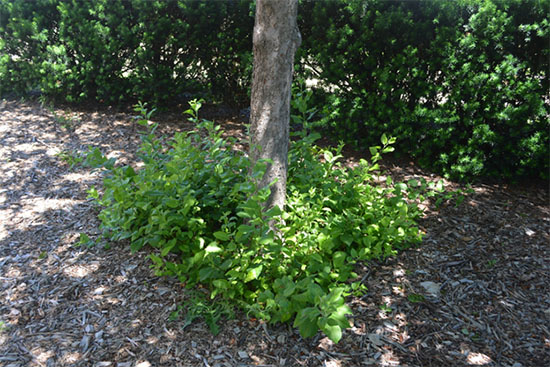Issue 6, June 4, 2018
Suckers and Water Sprouts
Some ornamentals and trees have a tendency to develop numerous epicormic sprouts. These vigorously growing sprouts arise from latent or adventitious buds. Sprouts that form on root tissues are referred to as "suckers," while those that form on stems and branches are termed "water sprouts." The main issues with either of these is that they have poor limb structure, the potential to shade out the main plant, and may even rob the desirable plant tissues of nutrients and water. If the sprouts or suckers are allowed to continue to grow, your ornamental tree may end up looking more like a shrub.

Water sprout on the main stem of a crabapple.

Suckers forming at the base of a crabapple.
So why does an ornamental or tree form sprouts? Some species are more prone to suckering than others, e.g. ornamental crabapples. In most cases, there are two reasons that a tree will put on suckers.
The first reason is stress. Some plants will produce new sprouts in response to stress. Trees attempt to develop more limbs so that they can overcome the injury or stress. Some pests or diseases will stimulate the tree to putting on more sprouts and. Age may factor into the stress. Many trees may not sucker when they are young, but will sucker as they mature in an attempt to start new trees.
The second reason that they will put on sprouts is that many trees are grafted. Rootstocks for many grafted trees are selected based on several qualities including their ability to reproduce easily. This can become a problem if the graft doesn't take well and the rootstock starts to sucker. The root stock isn't normally a desirable type. Those sprouts or suckers should be removed.
The misconception on pruning suckers or water sprouts is that you should wait until the winter when the plant is dormant. The problem is, the longer a sucker or sprout is allowed to stay around, the harder it to be remove. The sprouts will start to develop bark and continue to compete with the plant for nutrients. If this is a rootstock sucker, it will eventually develop leaves and fruit that is not desired and much different from the desired species. As you see a water sprout or sucker start, it is best to remove them at the origin. This may take several times through the season, but it will help the main species to thrive. (Maria Turner)
https://www.purduelandscapereport.org/article/so-long-suckers/
Author:
Maria Turner